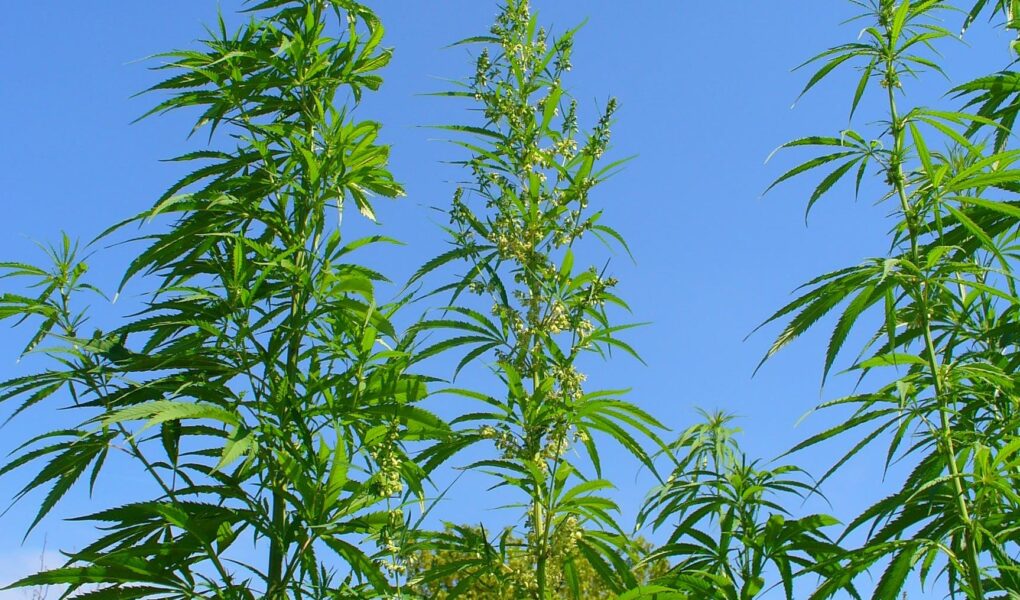Introduction: The Case Against Cannabis
In a world increasingly defined by its complexities and contradictions, the debate surrounding marijuana often evokes passionate responses from both sides. While many advocate for its medicinal benefits and relaxing properties, a closer examination reveals a series of compelling reasons to consider its darker implications. From potential health risks to social consequences and regulatory challenges, the narrative of marijuana is far from black and white. This article explores the less-discussed aspects of cannabis use, aiming to shed light on why some argue that marijuana may not be the benign herb it is often portrayed to be. Join us as we navigate through the shadows of cannabis culture, examining the evidence and perspectives that suggest a reconsideration of this controversial plant.
Table of Contents
- Understanding the Risks: Unpacking the Negative Health Effects of Marijuana
- The Social Implications: How Marijuana Use Influences Community Dynamics
- Navigating the Legal Landscape: Challenges and Consequences of Marijuana Legislation
- Preventative Strategies: Promoting Awareness and Responsible Choices for Youth
- Q&A
- Insights and Conclusions
Understanding the Risks: Unpacking the Negative Health Effects of Marijuana
While marijuana is often touted for its medicinal properties, it is essential to consider its potential health risks. Regular consumption can lead to a variety of negative effects, particularly when used in high doses or over extended periods. Some of the health concerns associated with marijuana use include:
- Cognitive Impairment: Marijuana can hinder short-term memory, decision-making skills, and attention span, especially in adolescents whose brains are still developing.
- Respiratory Issues: Smoking marijuana can irritate the lungs and lead to chronic bronchitis-like symptoms, including coughing and wheezing.
- Dependency and Withdrawal: Frequent users can develop a tolerance, leading to dependency, with withdrawal symptoms manifesting when they attempt to stop.
- Mental Health Effects: High THC levels have been linked to increased anxiety, paranoia, and, in some instances, exacerbation of underlying mental health disorders.
When assessing the broader implications of marijuana usage, it is crucial to consider these potential impacts in relation to its supposed benefits. A comprehensive understanding of the risks involved can help individuals make informed decisions about their consumption. The following table outlines some significant health effects commonly associated with marijuana use:
| Health Effect | Description |
|---|---|
| Cognitive Decline | Potential long-term impairment in memory and learning. |
| Respiratory Issues | Increased risk of chronic cough and airway inflammation. |
| Mental Health Deterioration | Possible trigger for anxiety disorders and psychosis. |
| Dependency Risks | Withdrawal symptoms in habitual users, including irritability and insomnia. |
The Social Implications: How Marijuana Use Influences Community Dynamics
The use of marijuana within community settings often shapes various social dynamics, leading to both perceived benefits and pronounced drawbacks. One significant concern is the potential for increased crime rates in areas where marijuana usage is prevalent, as it may attract illicit activities linked to trafficking and distribution. Communities might experience a shift in public perception that associates marijuana use with deviance, impacting how residents view their neighborhoods and fostering an atmosphere of unease. Additionally, the social normalization of marijuana can blur the lines between recreational use and dependency, potentially leading to a disenfranchised subset of the population.
Additionally, marijuana use can redefine community interactions and relationships. It often creates a divide between users and non-users, influencing social networks and group dynamics. In some instances, this can lead to a sense of alienation, where non-users feel uncomfortable or even threatened by the behaviors of those who engage in marijuana culture. This dynamic is particularly evident in youth communities, where peer pressure and social acceptance play crucial roles. To illustrate this impact, consider the following table, which outlines community perceptions based on marijuana’s presence:
| Perception | Impact on Community |
|---|---|
| Increased crime perception | Heightened anxiety among residents |
| Normalization of use | Blurring boundaries of acceptable behavior |
| Division among peers | Social isolation of non-users |
Navigating the Legal Landscape: Challenges and Consequences of Marijuana Legislation
As the conversation around marijuana evolves, so too does the complex legal framework that surrounds it. States that have moved to legalize cannabis, whether for recreational or medicinal use, face a plethora of challenges. These include navigating conflicting federal and state laws, addressing public health concerns, and managing the socioeconomic impacts within their communities. While advocates argue for the benefits of legalization—such as increased tax revenue and reduced criminal justice costs—opponents highlight potential negative consequences, particularly relating to substance abuse and impaired driving.
The consequences of changing marijuana legislation can often ripple through various sectors of society. For instance, businesses are left to grapple with issues such as employee drug testing and workplace safety concerns. Furthermore, municipal governments must invest in public education initiatives to inform citizens about the legalities and risks associated with marijuana use. In many cases, the impacts can be quantified through observable metrics, which include:
| Metric | After Legalization | Before Legalization |
|---|---|---|
| Traffic Incidents | Increase of 15% | N/A |
| Tax Revenue | Growth of 20% | N/A |
| Teen Use | Decrease of 5% | N/A |
Preventative Strategies: Promoting Awareness and Responsible Choices for Youth
In today’s rapidly evolving landscape, it is crucial to foster understanding about the potential risks posed by marijuana use among youth. Awareness can play a pivotal role in guiding young individuals toward making informed choices. Implementing educational programs in schools and community centers can provide essential insights into the long-term consequences of substance use, helping to dismantle the myths surrounding marijuana as a harmless substance. Workshops, seminars, and peer mentorship programs can create a robust environment where young people feel empowered to discuss concerns about marijuana responsibly.
Moreover, promoting healthy lifestyle choices is essential in steering youth away from marijuana use. By encouraging participation in extracurricular activities and fostering strong support networks, we can redirect attention toward more positive pursuits. Listed below are some effective approaches to promote responsible decisions among young individuals:
- Engaging Activities: Organize sports, arts, and community service events.
- Open Dialogues: Facilitate discussions between peers and trusted adults.
- Accessible Resources: Provide informative literature and online resources about marijuana.
- Peer Influence: Encourage youth-led initiatives to spread awareness.
| Strategy | Impact |
|---|---|
| Educational Workshops | Increased awareness and understanding of risks |
| Extracurricular Activities | Distraction from substance use and healthy bonding |
| Peer Support Groups | Building trust and openness in discussing challenges |
Q&A
Q&A: Understanding the Concerns Surrounding Marijuana Use
Q1: Why do some people consider marijuana to be harmful?
A1: The concerns about marijuana primarily stem from its psychoactive effects and potential health risks. Critics argue that regular use can lead to mental health issues, such as anxiety, depression, and psychosis, particularly in vulnerable populations. Furthermore, some studies suggest that marijuana use, especially when started in adolescence, can impair cognitive functions, impacting memory and learning abilities.
Q2: What are the physical health risks associated with marijuana consumption?
A2: While marijuana is often touted for its medicinal benefits, it’s important to acknowledge potential physical health risks. Smoking marijuana can harm lung health similar to tobacco, leading to chronic bronchitis or other respiratory issues. Additionally, marijuana can affect heart rate and blood pressure, posing risks for individuals with pre-existing cardiovascular conditions.
Q3: Are there social implications of marijuana use that raise concern?
A3: Yes, the social implications can be significant. Some argue that marijuana use may impair a person’s ability to perform tasks, such as driving, increasing the risk of accidents. Moreover, dependency on marijuana can lead to impaired social and occupational functioning, potentially straining relationships and diminishing productivity.
Q4: How does marijuana use affect teenagers and young adults specifically?
A4: Adolescents and young adults are particularly susceptible to the adverse effects of marijuana. Regular use during these formative years can disrupt brain development, potentially leading to lasting cognitive impairments. The risk of developing substance use disorders also increases in this age group, making it crucial to approach marijuana use with caution.
Q5: Are there legal implications surrounding marijuana that contribute to its negative perception?
A5: Indeed, the legal status of marijuana varies widely across regions, leading to a complex social landscape. In areas where marijuana remains illegal, possession or use can lead to criminal charges, impacting a person’s future opportunities. Additionally, the stigma associated with illegal drug use can perpetuate negative perceptions even in places where marijuana is legalized for recreational or medicinal purposes.
Q6: What about the misinformation regarding marijuana use?
A6: Misinformation can cloud the conversation about marijuana. Some narratives exaggerate the harms, while others downplay legitimate concerns, leading to confusion. It’s important for individuals to seek out balanced, research-based information to make informed decisions about marijuana use and its potential risks.
Q7: Ultimately, what is the key takeaway regarding marijuana use?
A7: The key takeaway is that, like many substances, marijuana has multifaceted effects that can be both beneficial and detrimental. It is crucial to weigh these aspects carefully. Understanding the potential risks, especially for young users, and approaching the subject with an open mind and a critical eye can help foster a more informed discussion about marijuana in society.
Insights and Conclusions
the discourse surrounding marijuana is as complex as the plant itself. While some advocate for its potential benefits—medicinal or even recreational—this article has explored the multifaceted arguments regarding its downsides. From health implications to social consequences, it’s clear that marijuana is not a panacea, and its use requires careful consideration and understanding. As public perception continues to evolve and research advances, the conversation will undoubtedly grow richer and more nuanced. Whether one views marijuana as harmful or benign, engaging thoughtfully with its implications is essential for informed decision-making in a world where substances shape our experiences. As we navigate this evolving landscape, let us aim for a balanced approach, weighing all sides before reaching our conclusions.



